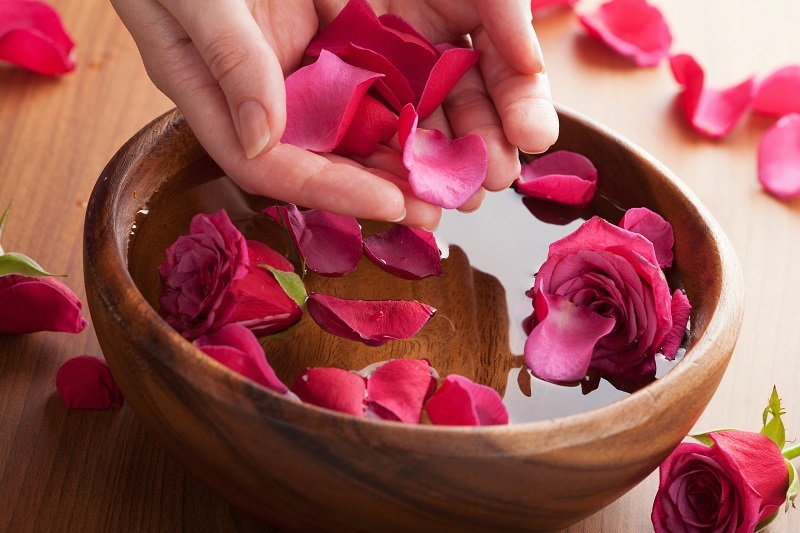Mastering the Art of Orchid Care
Posted on 01/07/2025
Mastering the Art of Orchid Care: Your Comprehensive Guide
Orchids are renowned for their exquisite blooms and diverse array of shapes and colors. These alluring plants have fascinated gardeners and houseplant lovers for centuries, representing not just beauty, but a challenge to master. Whether you're a novice or a seasoned green thumb, mastering the art of orchid care demands insight, patience, and the right approach. This comprehensive guide will walk you through everything you need to know about orchid plant care--from basic essentials to advanced nurturing tips.
Understanding Orchids: A Brief Introduction
With over 25,000 species, orchids are one of the largest and most diverse plant families on Earth. Native to nearly every continent except Antarctica, orchids have evolved unique features to thrive in varied environments. The most popular types among indoor gardeners include:
- Phalaenopsis (moth orchid)
- Cattleya
- Dendrobium
- Oncidium
- Vanda
Each variety requires nuanced care, but most foundational principles of proper orchid cultivation apply across the board.

Choosing the Right Orchid for Your Home
When learning how to care for orchids, it's essential to select a species that matches your environment and skill level. Phalaenopsis orchids are often recommended for beginners due to their resilience and forgiving nature, making orchid care easier for those just starting out.
- Consider your home's light, temperature, and humidity levels before choosing a variety.
- Research the specific needs of your chosen orchid type for best results.
The Basics of Orchid Plant Care
1. Light Requirements
Light is perhaps the most critical factor in successful orchid care. Most orchids require bright, indirect sunlight. Too much direct sun can cause scorching, while insufficient light results in poor blooming and weak growth.
- Place orchids near an east or south-facing window, filtered through sheer curtains.
- For rooms with low natural light, consider artificial grow lights.
- Look for reddish or yellowish leaves as signs of excessive light, and dark green leaves signal too little.
Tip: Avoid placing orchids on windowsills where temperatures fluctuate considerably between day and night.
2. Watering Orchids the Right Way
Proper watering is fundamental in mastering the art of orchid care. Unlike many houseplants, orchids hate being overwatered and may rot with prolonged moisture. Most orchids prefer to dry out between waterings. Here's what you need to know:
- Water when potting medium is nearly dry--usually every 7-10 days.
- Use room-temperature, non-chlorinated water whenever possible.
- Allow water to drain completely. Never let orchids sit in standing water.
- For humid climates, reduce watering frequency; increase in dry environments.
Pro tip: Water early in the day to let leaves dry and reduce risk of disease.
3. Humidity and Air Circulation
Orchids naturally thrive in environments with 40-70% humidity. Dry, indoor air can lead to shriveled leaves and stunted growth. To maintain optimal humidity for orchids:
- Use a humidity tray--set the orchid pot over a tray filled with pebbles and water.
- Regularly mist plants; avoid over-wetting the blooms.
- Cluster orchids together to naturally increase humidity levels.
Good airflow is equally important. Position fans gently in the room or open windows for natural ventilation. This prevents fungal diseases and helps orchids thrive.
4. Temperature
To master orchid care, you must replicate their natural temperature fluctuations. Most common orchids grow best with daytime temperatures of 20-26?C (68-80?F) and nighttime temperatures a bit cooler--about 13-18?C (55-65?F).
- Avoid placing orchids near heat vents or air conditioners.
- Monitor your space's minimum and maximum temperatures and adjust as needed.
5. The Right Potting Medium and Containers
Orchid roots need air as much as water. Typical soil is too dense, so choose special orchid mixes composed of bark, sphagnum moss, perlite, or coconut husk. When it comes to containers:
- Use well-draining orchid pots with plenty of drainage holes.
- Translucent plastic pots allow you to monitor the roots and water levels.
Re-pot orchids every 1-2 years, ideally after blooming.
Feeding Your Orchids: Fertilization Fundamentals
Fed with the right balance, orchids reward you with vibrant blooms and robust new growth. However, too much fertilizer can do more harm than good. For effective orchid nutrition:
- Apply a balanced fertilizer (20-20-20) diluted to half or quarter strength every two to four weeks during active growth.
- Flush pots with water monthly to prevent fertilizer buildup.
- Reduce feeding during the plant's dormant period (usually winter).
Remember: Under-fertilizing is preferable to over-fertilizing with orchids.
Repotting Orchids: Step-by-Step Guide
Repotting is essential to keep roots healthy and substrates fresh, both of which are critical for successful orchid care. Watch for these signs that your orchid needs repotting:
- Roots are growing over the edge of the pot.
- Medium is breaking down or has developed mold.
- Water drains very slowly.
How to Repot Your Orchid
- Choose a new pot slightly larger than the old one with ample drainage.
- Remove the orchid gently, shake off old potting mix, and trim dead roots.
- Fill the new pot with fresh, moistened orchid mix and place the plant inside.
- Secure the roots and water lightly.
- Return the orchid to its usual spot, and reduce fertilization for a few weeks.
Common Orchid Problems & Solutions
Even expert orchid growers encounter issues! Here's how to handle the most frequently faced problems in orchid plant care:
- Buds falling off (bud blast): Usually caused by sudden temperature or humidity changes. Keep orchids away from drafts.
- Yellow leaves: Can result from too much light, overwatering, or natural aging of old leaves.
- Mushy roots: Indicate root rot from overwatering. Remove affected roots and repot the plant.
- No blooms: Insufficient light is the most common reason. Gradually increase exposure (without scorching).
Advanced Orchid Care Tips for Show-Stopping Blooms
1. Encourage Reblooming
- After flowers drop, cut flower spikes down to a node to prompt new blooms.
- Provide a nighttime temperature drop of about 10? F (5? C) to enhance budding.
- Continue standard care, being patient--some orchids take several months to rebloom.
2. Pruning and Grooming
- Remove dead leaves and spent flower spikes with sterilized scissors.
- Trim unhealthy roots during repotting: healthy roots are white-green and firm.
3. Pest and Disease Prevention
- Inspect regularly for aphids, mealybugs, spider mites, or scale insects. Remove pests by hand or wash with soapy water.
- Ensure good airflow to prevent mold and fungal problems.
- Avoid wetting leaves excessively, especially at night.
The Rewards of Mastering Orchid Cultivation
When you diligently apply these orchid care techniques, you open the door to a rewarding hobby. Orchids aren't just beautiful--they are living reminders of your care and skill. Mastering the art of growing orchids involves consistent attention, observation, and willingness to experiment. Every success and setback deepens your understanding, turning orchid care into both an art and a science.

FAQs: Orchid Care Questions Answered
- Q: Do all orchids require the same care?
- A: No, while the core principles are the same, some varieties need special temperatures or humidity, so always check your species' needs.
- Q: How often should I water my orchid?
- A: Most orchids prefer to dry out between waterings, usually every 7-10 days, but adjust based on your potting mix and humidity levels.
- Q: Why are my orchid's flowers falling off prematurely?
- A: Sudden changes in the environment or watering schedule are likely culprits. Keep conditions consistent.
- Q: Can I plant orchids in regular potting soil?
- A: No, orchids need a special mix (bark, moss, etc.) that offers quick drainage and ample air to the roots.
- Q: How can I encourage repeat blooming?
- A: Provide enough light, a drop in nighttime temperatures, and proper feeding. Cut spent spikes just above a healthy node.
Conclusion: Flourishing with the Art of Orchid Care
Mastering the art of orchid care is a deeply satisfying journey for plant lovers of all skill levels. By understanding your orchid's origins and respecting their unique needs for light, humidity, water, and nutrition, you'll cultivate healthy, spectacularly blooming plants. As you gain confidence, experimenting with different orchid types and advanced techniques only deepens your appreciation and connection. Start your orchid adventure today, and let your green sanctuary bloom with unrivaled elegance!
For more expert advice and hands-on tutorials on growing healthy orchids, bookmark this guide and share it with your fellow plant enthusiasts. Happy gardening!
Latest Posts
Poinsettia Care Tips for Prolonged Beauty
Valentine's Day: 5 Must-Have Flowers to Gift
Mastering the Art of Orchid Care





